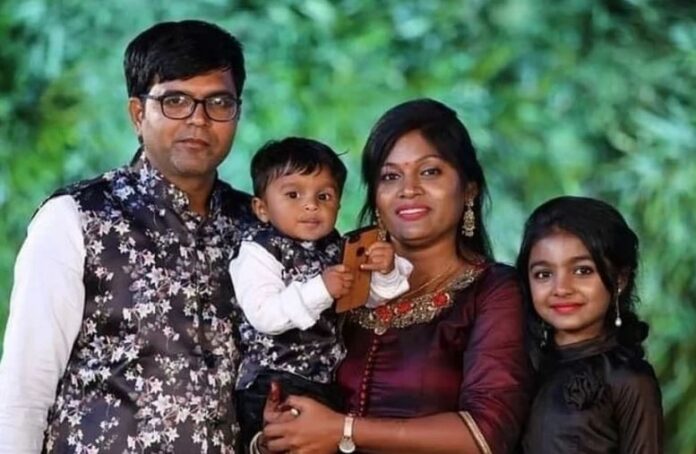One month after authorities found a family of four frozen to death on the U.S. Canadian border, open questions still remain about the case. Who was responsible for smuggling them to the United States? What are the future of surviving immigrants who made it across the border? And most of all: what motivated a family to set out on foot in frigid negative 35 degrees Fahrenheit weather, crossing a land unfamiliar to them, thousands of miles away from the home they left behind?
Seven Indian nationals arrested in connection to the case have been released from custody and ordered to return to Immigration and Customs Enforcement at a later date, CBS reports.
The tragedy threw light onto the global human smuggling rings that bring hundreds of Indian migrants to the US—at great physical and financial expense.
According to the BBC, the Patel family, who would later pass away on the US-Canada border, were originally from Dingucha Village in Gujarat, India. The state is home to a particularly high number of immigrants to North America. The BBC notes that Gujarati people comprise over 20% of the population of Indian origin in the United States, despite being just 6% of the overall Indian population.
What motivates this migration, according to some Gujaratis interviewed by the BBC, is intense pressure to move abroad. Stories abound about friend, family members, or acquaintances who have found financial success in the United States. Thus, immigration has become normalized as a way to improve socioeconomic status in a way that may not be possible in India— to the point where people are socially expected to move abroad.
Mitesh Trivedi, a Gujarati immigrant, told the BBC he also moved after feeling that pressure. Furthermore, despite his Bachelor’s degree in Engineering, he recognized that his options in India were limited.
“People think there are dollar trees [in Canada],” Trivedi told the BBC. “I had that in my mind when I came, I was 26 years old.”
He added: “I was born lower-middle class. If I had stayed, I would have died lower-middle class.”
However, legally immigrating to the United States is notoriously difficult for Indian American citizens. A study by the Cato Institute in 2018 notes that the average wait time for educated Indian citizens regularly exceeds a decade. For those in the EB-2 category, “Advanced Degrees,” the average wait time is 150 years. Even if they apply under the EB-3 category, “Bachelor’s Degrees,” wait times can extend over 30 years.
These difficulties have produced an extensive and lucrative underground market for human smugglers. According to India Today, migrants who successfully arrive in the US will refer family and friends to the agents who smuggle them, creating an informal whisper network.
However, the clandestine nature of the smuggling rings produces an environment ripe for the abuse and exploitation of immigrants. India Today reports that agents often target prospective migrants with unrealistic promises of success and wealth in the United States, hiding the truth: migrants without immigration documentation or a Social Security Number face sharp difficulties finding livelihood in the country.
At the most extreme, the migration can be physically, mentally, and financially devastating. Mitesh Patel, who was referred to a smuggler by an acquaintance in 2021, told the Indian Times that he was ultimately locked in a hotel room in Kolkata by the smugglers. His family’s belongings were stolen, his daughter taken away, and he was extorted for money over the course of months. In another case reported by the Times, a group of fifteen were taken hostage and tortured in Mumbai, until their families sent ransom money.
These dynamics help explain one of the central questions in the Patel border crossing case: why did the family choose the difficult path of migration despite having a comfortable life in Gujarat? It seems possible that the promises of a better life in America, one they believed would surpass their home in Gujarat, is what drew them into the ring of human traffickers that ultimately forced them into the situation which took their live.
For the Patel family, the journey to the United States ended in tragedy. But what about the other seven who successfully crossed the border?
Unfortunately, for most migrants, successfully entering the United States is the first of many difficulties they must surmount. According to Victoria Carmona, an immigration attorney at Chicago-Kent College of Law, undocumented immigrants face a “difficult system” that forces immigrants to rely on the little that was not stolen from them to survive.
Work permits, for instance, are prohibitively expensive and time-intensive to successfully apply for; unofficial jobs, meanwhile, can force them into exploitative situations. Seeking medical care is difficult for those without documentation. Furthermore, migrants are forced to wear ankle monitors or download an app with voice and facial recognition, limiting the mobility needed to work consistently. On top of all of this, organizations supporting migrants are often overstretched and lack resources, leaving migrants relying on family members already in the States for support.
Community organizer Maru Mora Villalpando founded La Resistencia NW, a grassroots organization supporting detained migrants in the Pacific Northwest. She notes that even if the migrants found someone who can speak Gujarati, the language they know, the migrants are still vulnerable to exploitation.
“The first thing is to find someone that speaks your language. And sometimes, that doesn’t guarantee support,” Mora Villalpando said. “There will be people that will take advantage of them because they’re just arriving.”
On top of that, she noted that many of the migrants had been forced into a traumatic situation—walking through painfully cold weather for over 11 hours under extreme stress—that they likely would not have psychological support for.
Ultimately, as Mora Villalpando stresses, the seven migrants will continue to face extensive difficulties now that they’ve crossed the border.
“They’re going to have to learn to survive,” she said.
The border crossing case is still full of unanswered questions. Who was responsible for forcing migrants to walk through the snow in negative 35 degrees Fahrenheit weather—a dangerous, perhaps even unsurvivable, situation? What was the full involvement of Steve Shand, a man recently indicted for human smuggling for his role in the case, per CBC?
These questions will likely remain unanswered until Shand’s court case. However, Mora Villalpando stresses that the severity of the case reflects the real dynamics of migration that many Indian immigrants face—which can result in difficult, even deadly, outcomes.
“People don’t choose having to go through the border this way because they just want the thrill of it,” she told CBS. “People do it because they’re desperate. There’s no other way for them.”
AsAmNews has Asian America in its heart. We’re an all-volunteer effort of dedicated staff and interns. Check out our new Instagram account. Go to our Twitter feed and Facebook page for more content. Please consider interning, joining our staff, or submitting a story, or making a contribution.



